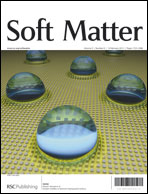Degradation of hydrolyzable hydrogel microspheres
Abstract
This work aims to monitor the hydrolysis of microspheres made of synthetic degradable hydrogels. Well spherical microspheres incorporating hydrolyzable crosslinkers inside their structure were first synthesized by direct


 Please wait while we load your content...
Please wait while we load your content...